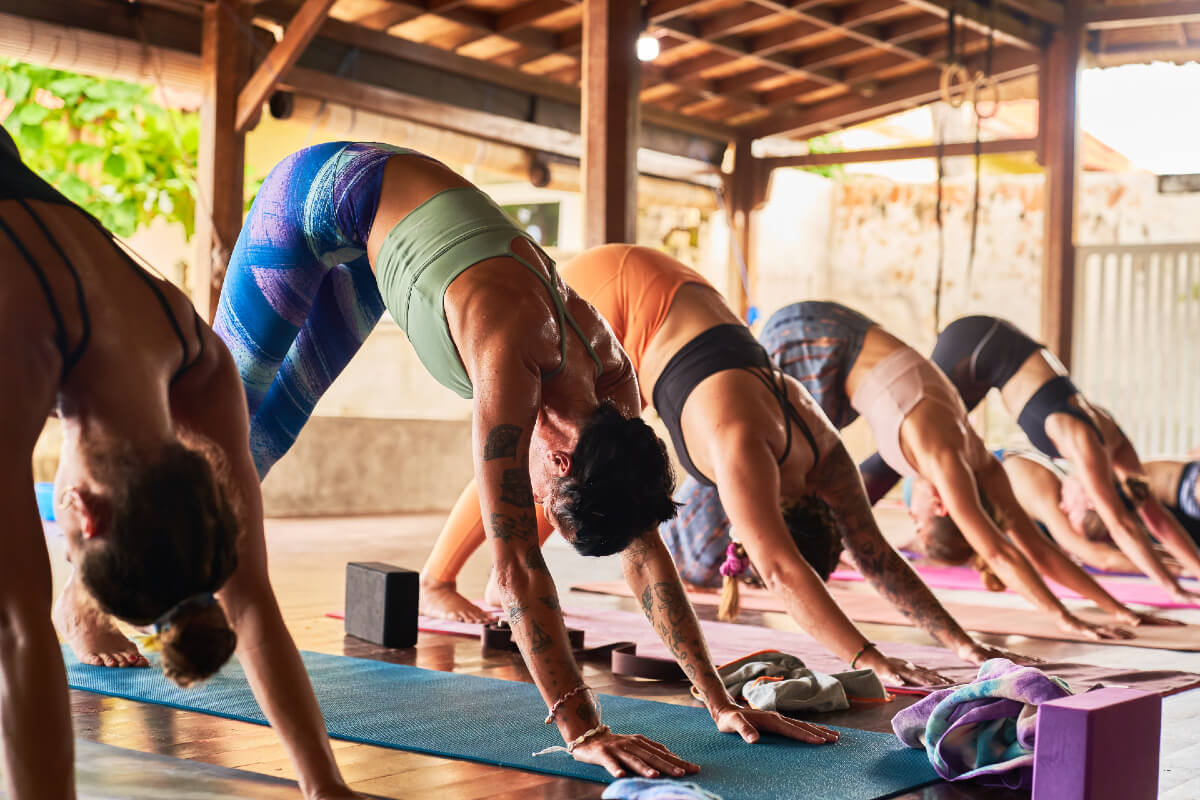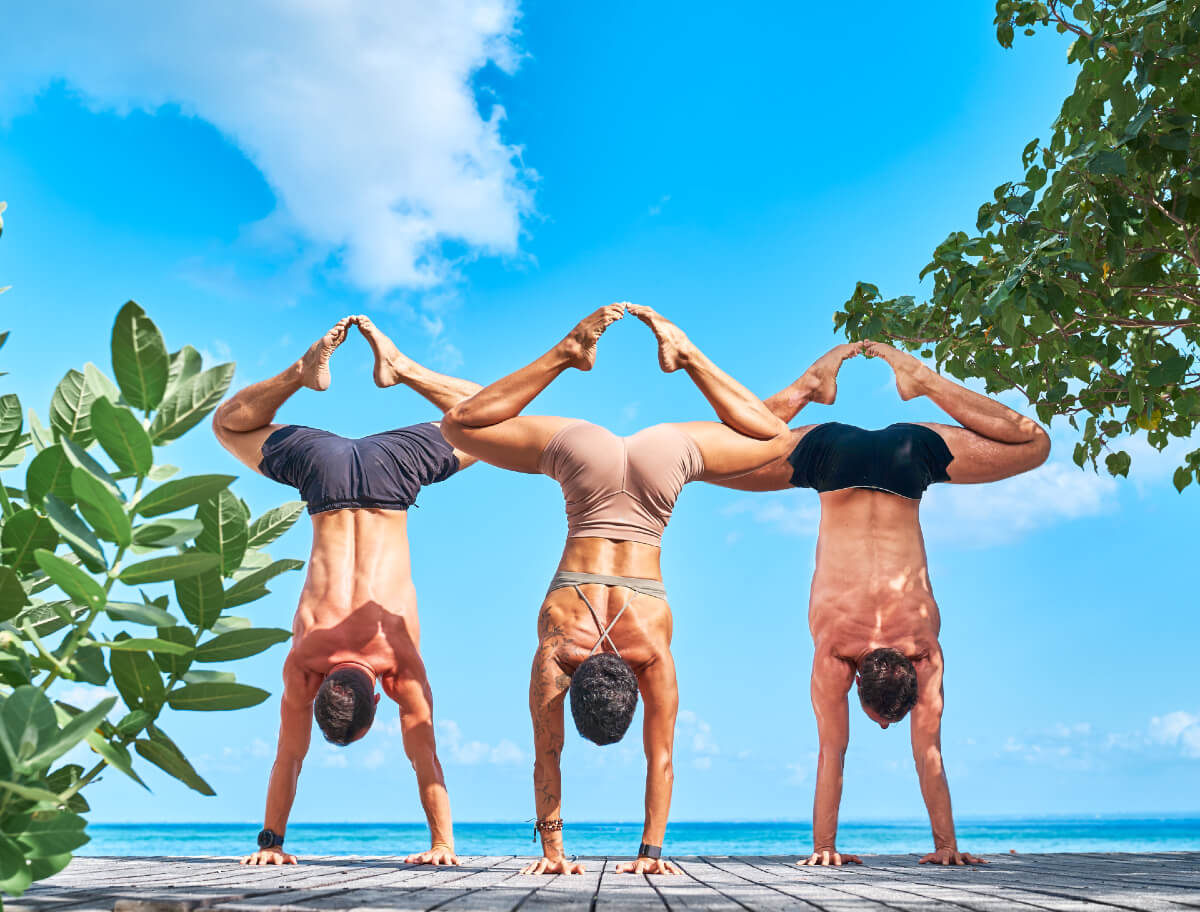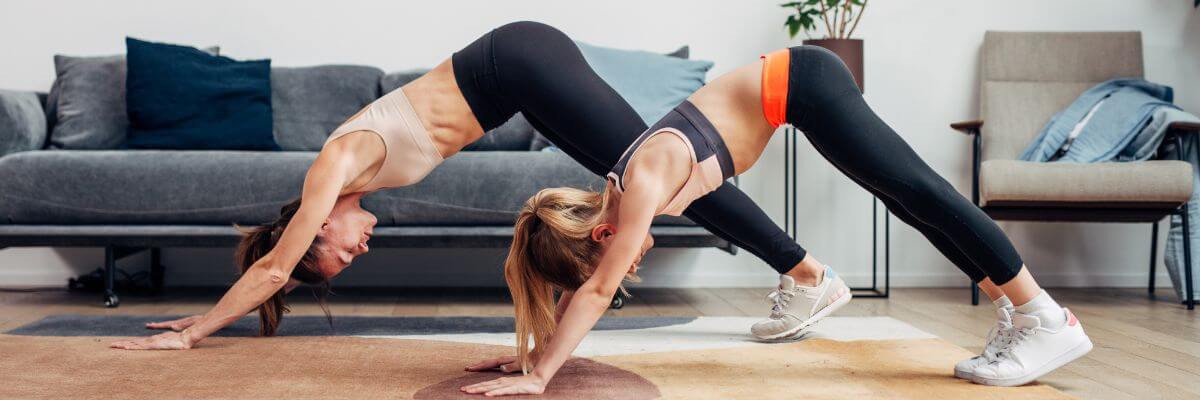Therefore, in this article we’ll incorporate a broader understanding about the nature of injury relative to vinyasas. Vinyasas may be associated with pain and discomfort for some practitioners, but is this due to inherent properties of the vinyasa itself? What if someone is strong and well-adapted to handle the loads of the vinyasa? Is the vinyasa still a problem? What if someone has a good amount of movement variety in their lives, which helps to round out the loading profile their body experiences? Is practicing frequent vinyasas still injurious for that person?
Clearly, whether the vinyasa (or any movement, for that matter!) is injurious is a nuanced question with a unique answer for every individual.
Moreover, the vinyasa offers lots of potential benefits. It provides an opportunity to develop horizontal shoulder-pushing strength. It can also be a productive way to improve shoulder and spine mobility. Plus, many people enjoy its familiar, flowing nature and consider it an integral part of the meditative yoga practice they know and love.
Instead of banning vinyasas from yoga classes (an avoidance approach), a more productive strategy is to focus on strength to support the vinyasa (an adaptive approach). The stronger we are, the more easeful our practice of vinyasas will be. And because strength tends to protect against injuries, increasing our strength will also naturally reduce our likelihood of injury. It’s the best of both worlds!
First Things First: Strength for Chaturanga is Key
A well-executed chaturanga requires a lot of strength. In fact, a full chaturanga requires us to push about 70% of our bodyweight through our arms. Many yogis lack this level of upper body strength and end up doing a “sloppy” chaturanga in their flow practice (oftentimes unknowingly).
Unfortunately, simply continuing to practice a sloppy chaturanga over and over is not an effective way to build strength. As a result, most flow-style yoga classes don’t do a good job of building the requisite strength. So what’s a yogi to do?
To intentionally build pushing strength to support chaturanga, it might mean doing so outside of your yoga practice. (Scandalous, we know!) Luckily, we can take cues from the strength training world for how to proceed. The key is to implement appropriately-scaled versions of bodyweight horizontal-pushing.
Here are our top 4 ways to build strength in a push-up movement pattern:




